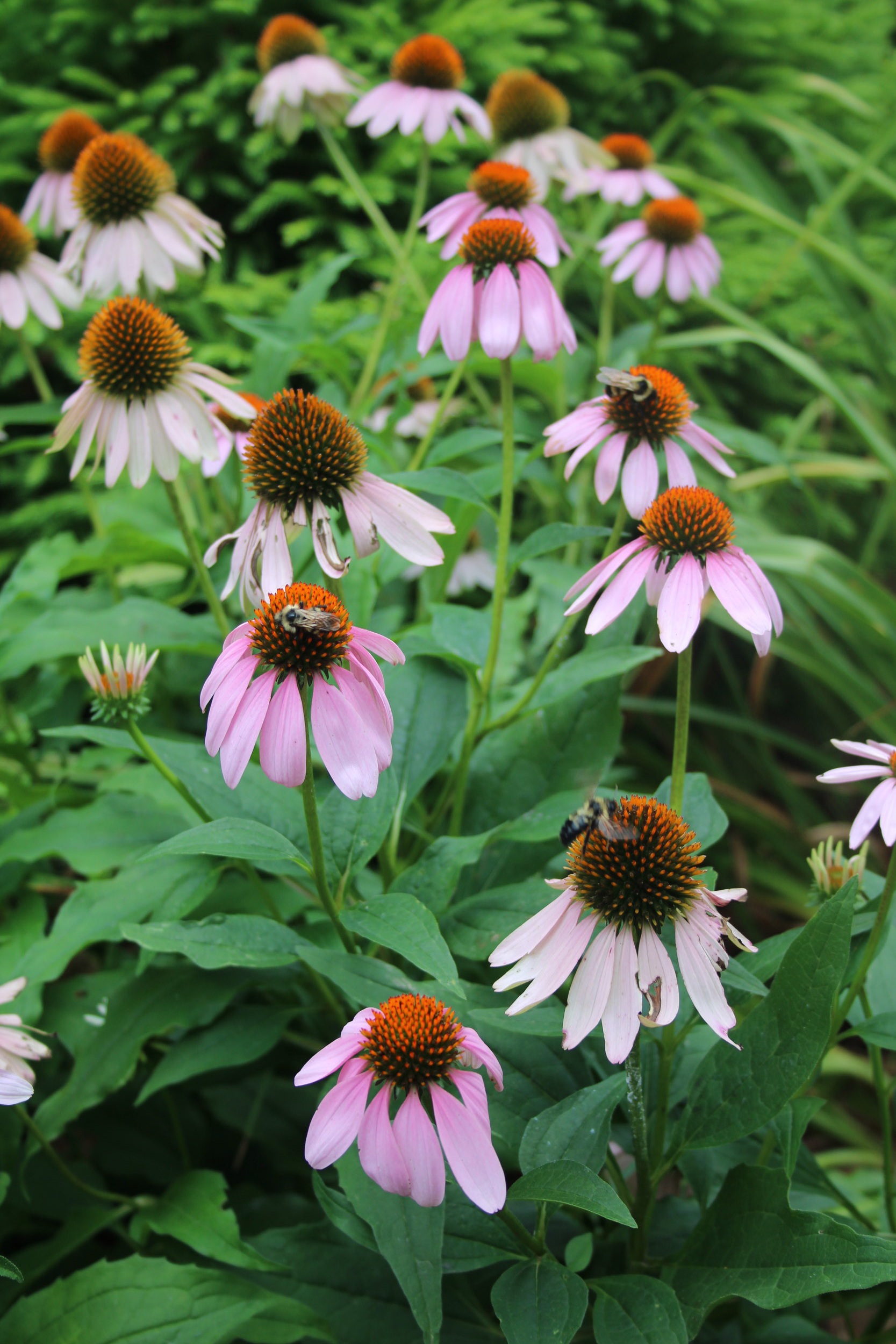Most perennials have shorter bloom periods than summer annuals. One that flowers for a lengthy time is Echinacea purpurea, Purple Coneflower. In upstate South Carolina, the first blooms open in late spring (just after Mother’s Day) and continue all the way to frost. Purple was the original color of this prairie native that has been adapted to garden use. Hybridization expanded color choices to rose, orange-red, yellow, pink, magenta, white and green. The Latin name came from the Greek word echinos, meaning hedgehog, a reference to the spiky orange central cone. The coarse leaves are a bit rough.
Coneflowers prefer full sun. They are heat resistant and will tolerate moderate drought. They are adaptable to various soil types and will grow in zones 3 to 9. They rarely need fertilizer. Cultivars vary in height but average 3-4 feet with a 2-3 foot spread.
Bumblebees and butterflies flock to the flowers. Blooms are long lasting, either on the plant or as cut flowers. Deadheading keeps the plant neater and forces fresh buds to form. I stop deadheading in autumn and allow the spent flowers to remain through winter, offering a seed treat to finches and other birds. Any uneaten seed self-sow for new plants in the spring but the seeds of cultivars may not be like their parent plants. Seedlings are easily transplanted. Cut dead leaves and stems to ground level in late winter before spring growth begins.
Deer ignore coneflowers but rabbits find them tasty. They are rarely damaged by insects or diseases, but may show occasional damage from aphids, Japanese beetles, powdery mildew or bacterial leaf spots. I have experienced an occasional problem with “aster yellows” but promptly removed the affected plants to avoid a spread to neighboring plants. My two favorite cultivars are ‘Magnus’ which has large, light purple blooms and ‘Kim’s Knee High’ which is only a foot tall. Both look best when planted in masses rather than as single plants.
A bumblebee busy on a ‘Magnus’ coneflower bloom.
A group planting.
Note the weird green buds inside the purple circle. These deformed blooms are a symptom of Aster Yellows. Remove and destroy the plant to prevent the spread. Aster yellows is a bacteria-like organism called a phytoplasma. It is spread by leafhoppers.



